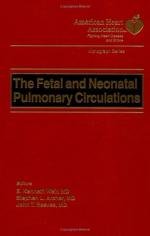|
This section contains 827 words (approx. 3 pages at 300 words per page) |

|
The developing fetal heart accounts for a large percentage of the volume of the early thorax. About 20 days after fertilization, the heart develops from the fusion of paired endothelial tubes into a single tube. Heart growth subsequently involves the growth, expansion, and partitioning of this tube into four chambers separated by thickened septa of cardiac muscle and valves. Atrial development is initially more advanced than ventricular development. The left and right atria develop while the primitive ventricle remains a single chamber. As atrial separation nears completion, the left and right ventricles begin to form, then continue until the heart consists of it's fully developed four-chambered structure.
Although the majority of the heart develops from mesoderm (splanchnic mesoderm) near the neural plate and sides of the embryonic disk, there are also contributions from neural crest cells that...
|
This section contains 827 words (approx. 3 pages at 300 words per page) |

|


